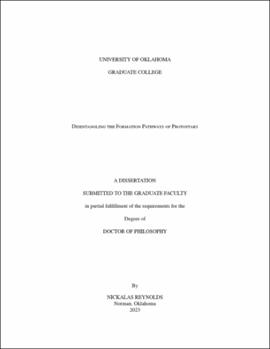| dc.description.abstract | Star formation occurs within dense cores within molecular clouds, often associated with filamentary structures. However, there exist isolated instances of star formation, far from nearby forming stars. As a core collapses, a rotationally supported circumstellar disk emerges around a central, gravitating potential with the accretion of gas and dust playing a vital role in regulating the subsequent stellar mass assembly. With recent studies revealing nearly half of all solar-type star systems are multiples, this raises questions about the mechanisms behind their formation. Furthermore, despite numerous discoveries of exoplanets with state-of-the-art space telescopes, the initial stages of planetary formation remain elusive. High-resolution interferometric imaging using ALMA of protoplanetary disks has ubiquitously unveiled intricate substructures, hinting at ongoing planet formation processes. To understand the formation and evolution of stars and their planetary systems, it is essential to better characterize their progenitors, known as "protostars”, particularly the youngest known phases of protostars, so-called Class 0. During the early stages of star formation, when gravitational collapse initiates, the conservation of angular momentum leads to the formation of a rotationally supported disk. However, only a handful of Class 0 protostellar disks, which are highly embedded in gas and dust, have been rigorously detailed so far. Consequently, a more comprehensive analysis of Class 0/I systems is imperative for understanding their formation and evolution. This dissertation aims to address multiple outstanding questions in star formation, beginning with a detailed investigation of an extraordinary triple-source protostellar Class 0 system, L1448 IRS3B. Expanding the focus, BHR7, an isolated Class 0 source, is studied to map the transfer of angular momentum from 1000s of au down to the disk. BHR7 serves as an ideal testbed for non-ideal MHD theory and represents a prototypical isolated Class 0 source, free from contamination by nearby forming stars. Furthermore, a high-resolution survey is conducted in the Perseus region, encompassing 12 known multiple star systems, to determine the most probable formation pathways for each of these sources. Rigorous modeling techniques and statistical tests are employed to disentangle the formation pathways of the protostars. By undertaking these investigations, I aim to enhance our understanding of star formation processes, provide observational constraints on star formation theory, and shed light on the complex formation mechanisms underlying multiple star systems, which are thought to be the early stages of exoplanet progenitors. | en_US |

